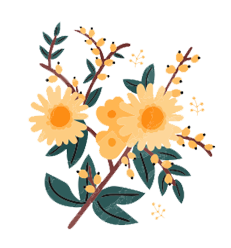The Psychology of Floral Design: How Flowers Influence Mood and Well-being
Sponsored Listings


Flowers have long been celebrated for their beauty, but their impact extends far beyond mere aesthetics. In recent years, researchers have begun to uncover the profound psychological effects of floral design, shedding light on the powerful influence flowers have on our mood, emotions, and overall well-being.
Color Psychology
One of the most striking aspects of floral design is the array of colors that flowers come in, each with its own unique psychological impact. For example, vibrant reds and oranges are associated with energy and passion, while soft blues and purples evoke feelings of calm and tranquility. By carefully selecting colors in floral arrangements, designers can create specific moods and atmospheres tailored to the occasion.
Scent and Memory
The sense of smell is closely linked to memory and emotion, making floral scents particularly potent in influencing our mood. Research has shown that certain floral fragrances, such as lavender and jasmine, have calming effects and can reduce stress and anxiety. Incorporating these scents into floral designs can create a soothing and uplifting environment, whether it’s in a home, office, or event space.
Biophilia and Connection to Nature
The concept of biophilia suggests that humans have an innate connection to nature and that exposure to natural elements, such as flowers and plants, can improve our well-being. Studies have found that simply being in the presence of flowers can elevate mood, increase feelings of happiness, and even reduce feelings of pain and discomfort. Floral design allows us to bring a touch of nature into our indoor spaces, fostering a sense of connection to the natural world and enhancing our overall sense of well-being.
The Gift of Flowers
Beyond their aesthetic appeal, giving and receiving flowers can have profound psychological effects on both the sender and recipient. Research has shown that receiving flowers can trigger positive emotions, increase feelings of gratitude and satisfaction, and strengthen social connections. Similarly, giving flowers can boost the giver’s mood and sense of well-being, fostering a sense of connection and reciprocity.
Floral design is more than just a decorative art form—it’s a powerful tool for enhancing our mood, emotions, and overall well-being. From the colors and scents of flowers to their ability to evoke memories and foster connections, flowers have a profound psychological impact on our lives. Whether it’s a simple bouquet on a bedside table or an elaborate floral arrangement at a special event, the beauty of flowers has the power to uplift and inspire us in countless ways.

 Mastering the Business Side of Petals and Profits
Mastering the Business Side of Petals and Profits